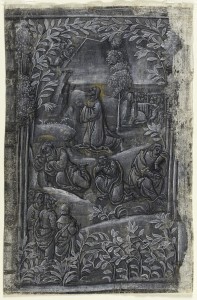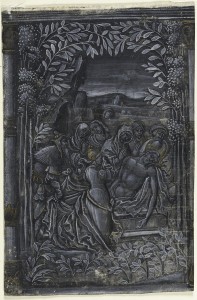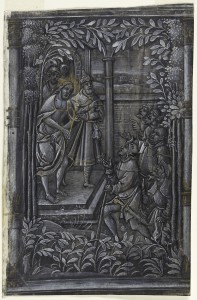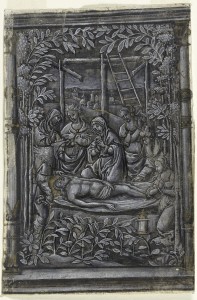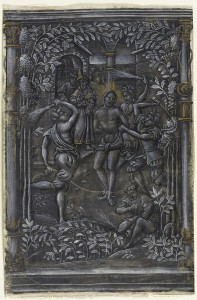Grisaille, painting in shades of grey and black, first appeared in 12th-century stained glass windows, and later in frescos, altarpieces, silks, enamels and illuminated manuscripts. In the case of manuscripts, it involved modelling in graded tones of grey and black usually made from either dilute black ink or carbon black, sometimes mixed with lead white. Miniatures painted in grisaille were sometimes tinted with delicate washes of other colours – a technique known as semi-grisaille. Often areas of parchment were left bare to suggest highlights. The economy of materials underscored the technical skills of illuminators.
In Paris in the 1320s, where the earliest and finest grisaille manuscripts were made, the most innovative artists used a pointillist technique, rendering figures with tiny brush strokes and dots to create the illusion of three-dimensional forms. Grisaille endured in France well into the 16th century, enjoyed a brief flowering in 15th-century Flanders and was occasionally adopted in other regions. But it was reserved mainly for manuscripts commissioned by princely patrons, reflecting their sophisticated tastes.
